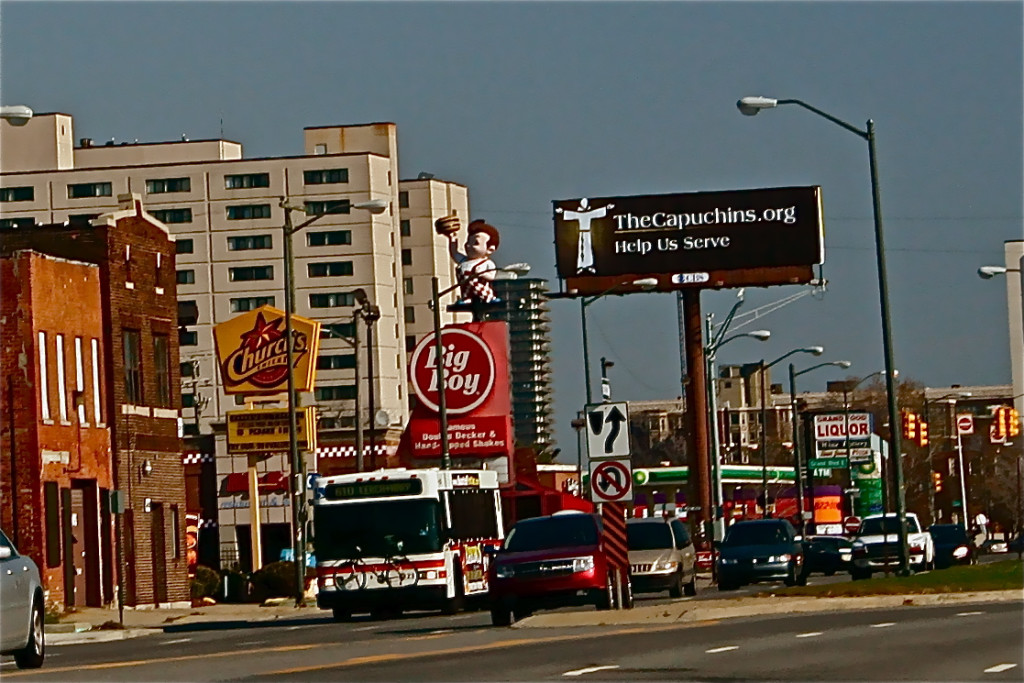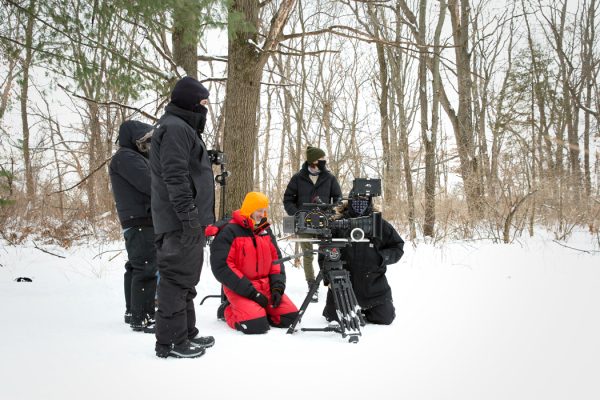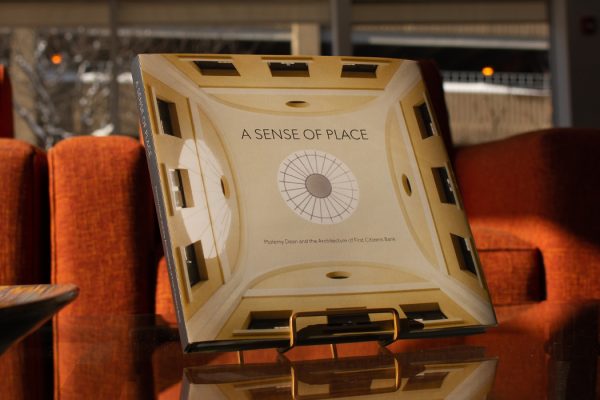
. . . gets about 300 thousand hits on Google. “Marketing and faith” gets about 200 thousand. One might expect more, but one would be wrong. “Faith” gets about half a billion hits, “marketing” nearly two billion. Overlap them? Chickenfeed, relatively speaking.
I was raised Catholic. I was even an altar boy, growing up. However, I’m not a person of faith. By any means at all.
I do read a lot about religion. I find it fascinating. It’s the story of humanity, after all, of man and woman reconciling themselves to the large world around them. Or trying to, anyway.
But I don’t practice. I’m about as agnostic as anyone can get: I freely admit I do not know a single thing about anything outside the empirical world around me or what happens after we die.
I always liked the line from Hamlet about death. Shakespeare called it “the undiscovered country from whose bourn no traveler returns.” When it comes to metaphysics, I’m practical on the subject: I can’t know what it all means, so I don’t spend any time worrying about it.
But I respect those who do. As I said three paragraphs ago, faith is the story of humanity.
Eleven years ago, as you may recall, the big pop culture war over faith here in America centered on the movie, The Passion Of The Christ.
When all that went down, the lady who handled the in-house PR chores at the last place I worked asked if I’d put together some thoughts on the marketing and advertising implications of the controversy (such as it was) and she’d try to shop it around to one of the industry trades.
So, I wrote an essay about the hands-off relationship advertising tends to have when it comes to religion. And how it struck me as curious that we, as an industry, turn our collective back when it comes to the topic of faith. How we’re more comfortable using words like “spiritual” rather than words like “religious.”
Boy did that cause a problem.
For a few days, it was a big, big thing around the office. Some folks liked it, other folks were angry about it.
The con side said it didn’t like me shoving my religion down people’s throats (again, just to make sure the point is absolutely, perfectly, 100 percent clear: I do not have any religion to be shoving anywhere). Or didn’t think the topic should ever be brought up (kind of proving the point, I thought). Or whatever. The pro side found it an interesting “what if?”
It just so happened there was a management team dinner that week. I vaguely recall that it was at Big Rock over on Eton in Birmingham. What I more clearly recall is, when the dinner reached its later courses, discussion moved again to the marketing and faith essay. I left. I do find faith and religion – all forms of faith and religion, including the absence thereof – endlessly fascinating. But all the fighting wears me out.
Anyway, I thought about that essay last week. And the arguing that came with it. So I thought I’d share it here.
* * *
Madison + Divine
By the looks of it, the controversy surrounding The Passion Of The Christ has largely burned itself out: Everyone with an opinion has shared it and all that’s left for us to do is wait for the DVD and try to figure out the moral of this story before we move on to the next dust up.
For those of us who make our living in the advertising end of the culture industry, the lesson to draw should be clear (though it will likely get lost in all the umbrage): There remains a huge divide between the people who make culture in this country and the people expected to consume it. And that divide manifests itself most starkly in culture, class and religion.
Even before the 2000 election gave us the Red State/Blue State model of American geography, we were all familiar with the notion of flyover, that vast and empty expanse that separates airport gates in California and New York. The truth is, however, the coasts-versus-heartland model doesn’t really work: If you take a look at the red county/blue county map, you’ll see a field of red punctuated by slashes of blue. Which should come as no surprise: There are progressives in Topeka, Kansas and traditionalists in San Francisco, California.
Now take a look at the 2003 Statistical Abstract of the United States. Here are some facts: Our median household income (as of 2001) is $42,228; the median household income for a married couple family household is $60,471. Only 7.3 percent of families enjoy a household income of $100,000 or higher.
Compare those figures with senior level incomes in the agency business. Compare it with your income. There’s a good chance that, if you’re not very junior in your career, you’ll see a bit of a gap.
The metaphor I’ve used over the years to illustrate this economic divide between the vast majority of culture users and the slim minority of culture makers is that of a birthday cake: There’s the cake itself (the several layers of mainstream America) and there’s the frosting (economic and cultural elites). The cake takes up a lot more room than the frosting but the frosting is both richer and sweeter.
The point is this: In no way are those of us responsible for what goes into the popular media (whether it’s news, entertainment or advertising) particularly similar to the people for whom we create that culture. For all our supposed diversity, we tend to be very homogeneous within our group – watching as we do the same TV shows, going to the same movies, driving the same cars, reading the same books and magazines, eating and drinking the same food and beverages. But the frosting people just don’t look, live or act like the cake people (even in California, more people own welders than PDAs).
And one of the biggest differences is religion: They generally have it, we generally don’t. We suffer, I’ve noticed, from a willful ignorance of or even hostility to the defining role of religion in the lives of many, many Americans. Either we’re not comfortable with the topic (having the good taste not to discuss it) or we actively look down on a faith and practice we don’t have.
Here are some more facts: According to the Harris Poll last year, 90 percent of adults in the U.S. believe in God; 82 percent believe in heaven; 69 percent believe in hell. Even more to the point: A 2001 ABC News/Beliefnet poll (pre Sept. 11) found that 83 percent of American adults identify themselves as Christians. Of those, 37 percent say they are evangelical or born again. Meaning almost a third of adults in this country are people who define themselves largely in terms of an evangelical Christian religious experience. Other research has put that figure as high as 47 percent.
In a business where our agencies and holding companies have business units and disciplines dedicated to marketing to children, teens, young adults, seniors, African Americans, Spanish speaking Americans, Asian Americans, the gay-lesbian-bisexual-transsexual-transgendered community and sports enthusiasts, what serious efforts do we make to cultivate a relationship between our clients and the 60 million or so adult members of the evangelical community? How frequently do we take the sensibilities of the faithful into consideration when evaluating our advertising content? How often, when trying to bring our consumer audience to life for our clients and our peers, do we use the word “spiritual” when the word “religious” would be more accurate? How many times do we consider the religious lifestyle when identifying media opportunities for our clients’ brands?
I ask this question as someone who is decidedly NOT among the faithful: If we knew that a third of a client’s customer base ran marathons every weekend, wouldn’t we have our clients sponsoring races all over the country?
I don’t have a point of view about the right way to explore the marketing implications of religion. I don’t even know if I think it’s a good idea. I do know from experience that we as an industry don’t give it serious consideration and our bias stems in large part from ignorance and even hostility. That being the case, we’re not doing everything we can to bring our clients as close as possible to the people with whom they need to cultivate lifelong and multifaceted relationships.
Remember how much controversy there was a couple years ago when Chevrolet sponsored a Christian music festival tour? Why do so many of us reject out of hand the idea that this defining element of someone’s life and the lifestyle that goes with it could be in bounds? (Isn’t this the flip side of the evangelicals getting mad when marketers pursue the gay market?)
It’s true that religious belief and practice correlates inversely with education and income (the more of the latter you have, the less of the former you tend to) and so the market may look to some as less than lucrative. But it’s not true that faith is the province only of the poor and uneducated. There’s a lot of money being made in Christian bookstores, music stores, websites, events, concert tours, etc. (and that’s just the evangelical world). Now go to Borders and thumb your way through the various magazines serving faith-based audiences. How many national advertisers do you find?
Here’s where The Passion Of The Christ comes in: Mel Gibson proved that there was money to be made in creating mainstream media content of specific interest to the faithful. The culture industry being what it is, there will be more “religious” movies, books, television shows, etc. But will they work? Most of them, probably not. And the reason, likely, will be a blitheness on the part of the people who serve up those offerings about the meaning of those offerings to the people expected to consume them.
In the first two weeks of its release, Passion was seen by about 30-35 million people. Two Mondays after Passion broke, ABC ran a movie, Judas, that played to fewer than 10 million viewers. What Mel Gibson understood and the people behind Judas did not was that the great unfulfilled market of faithful Catholics and evangelicals will only accept religious-themed content that comes from a place of respect for those with faith. There will likely be a lot of bad religious movies and television shows in the next couple years. And they will largely fail.
This is the lesson for the ad maker wing of the culture factory: Like it or not, there is a large and lucrative market out there – people united by values, lifestyle and consumption behaviors – and we have not done nearly enough to consider how best to cultivate that market for our clients.
There’s been a lot of talk the last year or two in our business about Madison + Vine—finding opportunities for marketers and the entertainment industry to work together for the common good. But what about Madison + Divine? Every week, more people go to church than go to the movies, the arts or professional sporting events. Combined. What are the right opportunities for marketers and agencies to explore reaching out to the single largest “niche” market in America?
* * *
If you’re still reading, a few more thoughts from 2015
Over the years, I’ve worked – either a little or a lot – on scores of businesses, brands and products. Big brands, little brands, innovative brands, traditional brands. We live in a marketplace either crowded or rich – depending on how you look at it – with brands enough to satisfy the needs and wants of every demographic, every geographic, every psychographic, every lifestyle, every everything.
I think that’s the wonderful thing about doing marketing and advertising now.
The old mass market fragmented into a bunch of mini mass markets, with anywhere from a few hundred thousand members to millions in each cohort. Think of them as tribes united by a shared frame of reference: Musical tastes, ethnicity, politics, recreational interests, age, whatever, wherever.
Today’s communication tools – among them several hundred cable channels, the internet, satellite radio, vertical interest magazines and more – allow us as ad people to speak more precisely to those tribes than ever before in the history of business.
It’s wonderfully empowering: We can match up audience, media and message like never before. And being able to reach out to just the tribes we want to reach without having to worry about what the tribes we don’t want to reach think can be liberating.
The catch is, I think, we need to be honest about who those tribes are and what binds the members together. On the subject of faith, I’ve worked on brands and products where faith and religion have been fundamental touchstones for the people in the tribes we wanted to reach. It was a fact of the audience and their story as people.
In all honesty, I still don’t have a real opinion on what to do about it. I still don’t know if there’s anything to be done about it. But I still believe it’s something worth thinking about.
And occasionally talking about.
Because a little talking never hurt anything.
ml
4.8.2015







